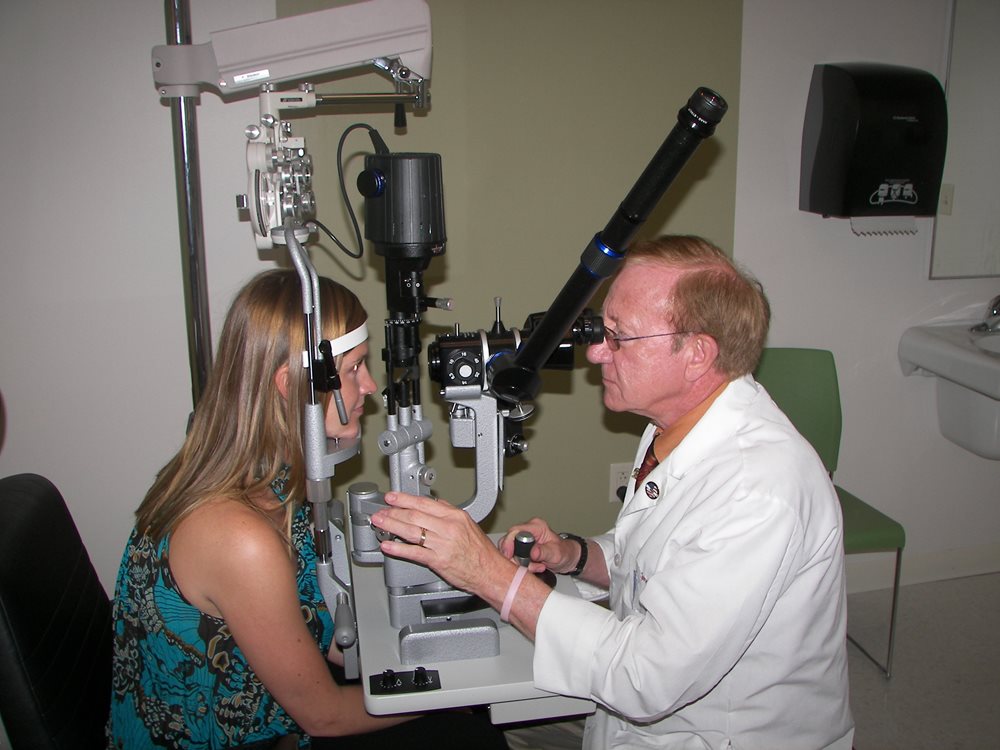Fast Facts: Women’s Eye Health
According to Prevent Blindness America, 66% of people who are blind or visually impaired are women. This is primarily due to the fact that women have more risk factors for vision loss than men.
Statistically, women live longer than men and many eye diseases are age-related. Examples of these conditions are cataracts, macular degeneration and diabetic retinopathy. The rates of these diseases are increasing as the baby boomer population ages.
 According to the National Institute of Health, women also have higher rates of autoimmune diseases such as lupus, rheumatoid arthritis and multiple sclerosis. The serious side effects of these conditions can affect your eyes, causing vision loss.
According to the National Institute of Health, women also have higher rates of autoimmune diseases such as lupus, rheumatoid arthritis and multiple sclerosis. The serious side effects of these conditions can affect your eyes, causing vision loss.
The National Eye Institute estimates that more than three million women have dry eye, especially menopausal women. They are at a higher risk of eye surface damage due to dry eye potentially leading to vision loss.
Dry eye syndrome can result in decreased vision, as well as irritation, redness, and pain. The eyes are lubricated by tears that are produced by glands on the surface of the eye. Dry eye syndrome occurs when your eyes produce too few tears. Your eyes may burn, sting or feel gritty, making your vision blurry or you may blink more. As women age, and especially as they reach menopause, they can experience hormonal imbalances that are thought to contribute to dry eye syndrome.
Pregnancy-related eye changes are caused by hormone shifts and can cause several temporary eye conditions, such as dry eye and corneal swelling. Expectant mothers may also experience vision effects from migraine headaches, diabetes and high blood pressure.
Cataracts are the world’s leading cause of blindness. They are the result of a clouding of your eye’s normally clear lens. They can be treated with cataract surgery, where the cloudy lens is replaced with a clear synthetic lens. Most cataracts are related to aging and are very common in older people. According to the National Eye Institute, by age 80, more than half of all Americans either have a cataract or have had cataract surgery
Glaucoma is the second-leading cause of blindness in the United States. It happens when pressure in the eye, intraocular pressure is too high damaging the optic nerve, which sends vision signals to the brain. Open-angle glaucoma, the most common type, affects men and women equally. But women are two to four times more likely than men to get closed-angle glaucoma. One of the possible reasons for this is that the front chamber between the iris and cornea is shallower in women than men and can block fluids from draining out of the eye, thus increasing pressure.
Age-related macular degeneration (AMD) is the number one cause of vision loss in people over 50, according to the National Eye Institute. One of the reasons women are at higher risk is because they tend to live longer than men. AMD gradually destroys the central part of your sight that helps you read or drive. It causes damage to the macula, the small central portion of the retina, which is used for sharp, central vision. Noticeable vision loss may not occur for a long time because of the slow-moving nature of the disease. Those with AMD may develop blank spots in their central vision and objects may not appear as bright in color. It is also possible to only develop AMD in one eye and not the other. While the disease may not lead to complete blindness, it may interfere with simple, everyday tasks
Diabetic retinopathy is a result of diabetes. When blood sugar levels are too high, the vessels that feed the retina weaken and eventually leak, which cause the macula to swell. In its most dangerous form the retina may detach from the back of the eye leading to blindness. Risk also increases the longer someone has diabetes.
Scheduling a comprehensive eye exam at least once a year is an excellent first line of defense against eye disease but you should contact your doctor sooner if you notice any visual changes. Contact The Eye Institute to make an appointment at one of our practice locations.